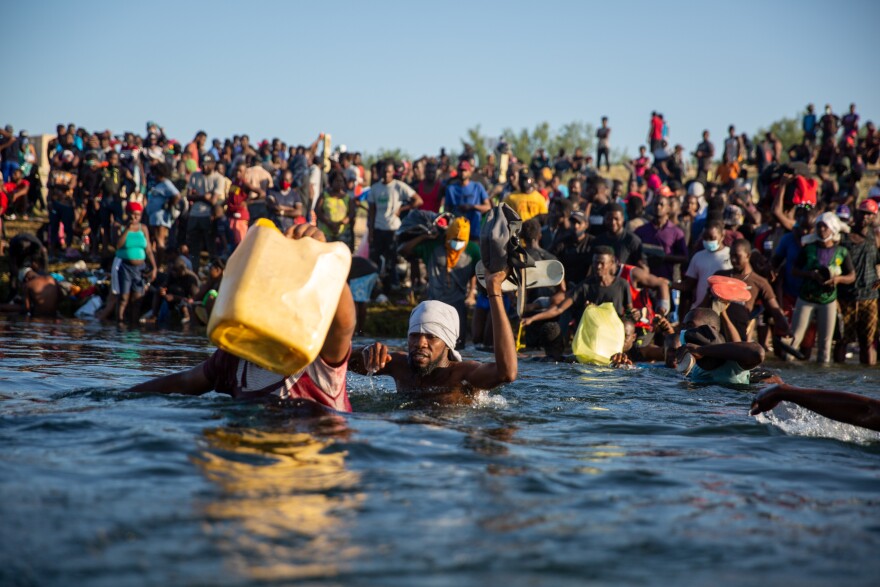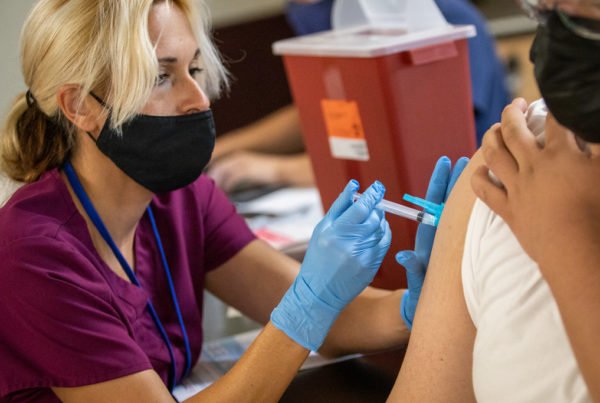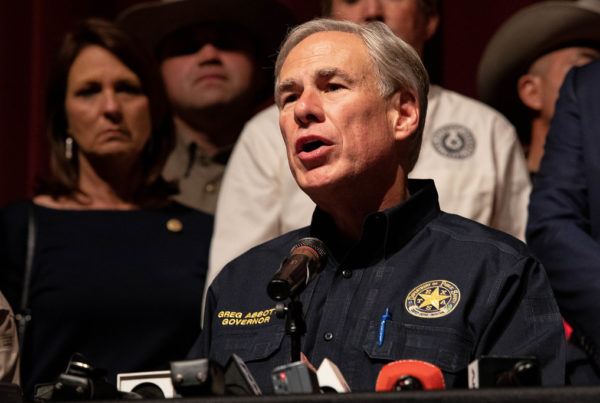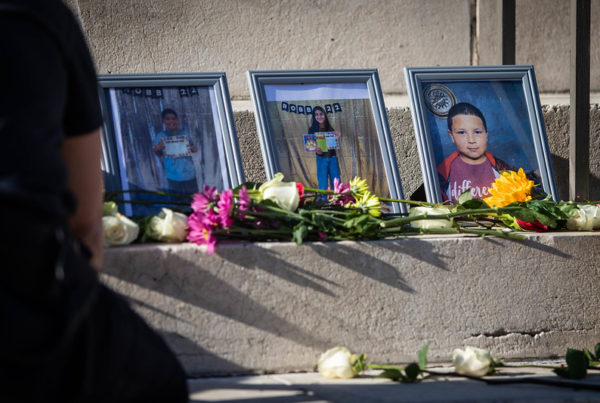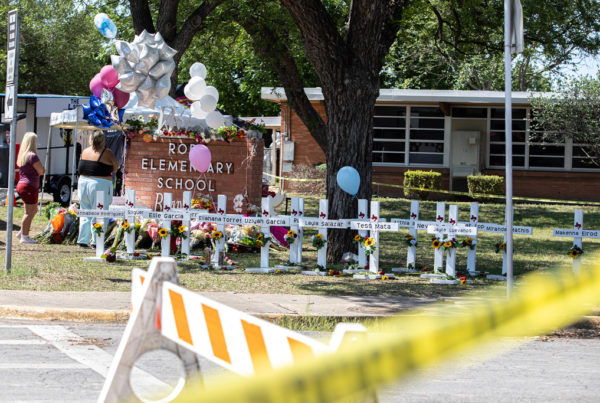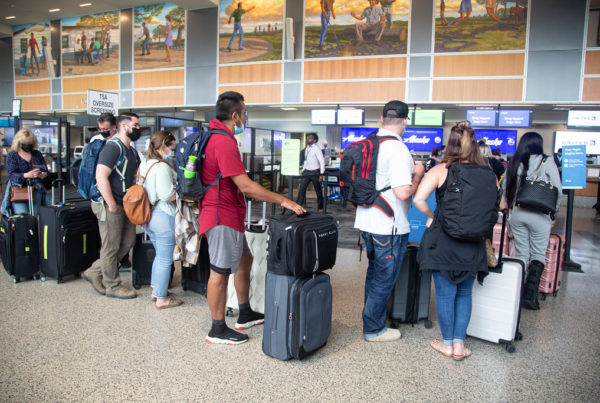From Texas Public Radio:
A 7.0 earthquake hit Haiti killing 150,000 people, and displacing 1.5 million more in 2010. In the aftermath, many Haitians fled to Brazil and Chile seeking a place to call home. In mid-September 2021, an influx of Haitian migrants sought refuge in Del Rio, Texas after years of traveling through South and Central America.
Co-hosts of the “Line in the Land” podcast Elizabeth Trovall of the Houston Chronicle, and Texas Public Radio’s Joey Palacios discuss the journey of those migrants and the forces that led them to take such a long, perilous journey. Listen to the interview above or read the transcript below.
This transcript has been edited lightly for clarity:
Texas Standard: Congratulations to you both on your new podcast. The first episode opens with scenes from the border where Haitian migrants were gathered in Del Rio. But Elizabeth, you point out that this particular scene is different from other instances where there were a large influx of migrants at the border. How so?
Elizabeth Trovall: It was different for a lot of reasons. This was not a population we usually see at the Texas-Mexico border. They were mostly Haitian migrants and they were not actually coming from Haiti, but South America. Also, it was just a lot of people all at once. We’re talking about 16,000 people arriving within a matter of days. And also, this was Del Rio, generally a sleepy border town, which historically is not a major crossing area like we see in the Rio Grande Valley. So there also was just not a lot of infrastructure to manage this influx.
Joey, you mentioned that that one of the objectives with this podcast was to sort of zoom in from that 10,000-foot view that we all read and heard so much about back in 2021. Right?
Joey Palacios: Right. And when you hear about immigration and migration, you hear the collective story and major news cycles. One of the things that we do with Elizabeth’s fantastic reporting is we take you into the individual stories of the people who had to leave Haiti, starting with the 2010 earthquake, and then spend more than a decade traveling around South America, setting up lives in Brazil, setting up lives in Chile, many with the end goal of trying to get to the United States to seek asylum, to move here. But it’s such a long journey and the external factors that governments, not just in the U.S., but also in Mexico, in Brazil, in other countries in South America – all of those decisions having being made at the high level have on their lives.
Elizabeth, can you say more about the factors that led so many Haitians to seek refuge at the U.S. border?
Trovall: This is one of the questions at the center of this entire podcast. And it really starts with the earthquake in Haiti in 2010, which displaced 1.5 million people – a big number. Thousands ended up in South America to seek refuge there, to get jobs there in countries like Brazil and Chile. And then in the last few years, conditions shifted in those countries, especially in Chile, which really turned the heat up on Haitian migrants, making it harder for them to live in that country. And then Biden is elected. And then there’s this perception that there will be softer border enforcement towards Haitians. And there actually was at the start of 2021. So there was this ripple effect happening over the course of a of a decade. And as I mentioned, many people weren’t coming directly from Haiti.
Joey, I want to bring you back in here. Can you speak more about the complicated journey that so many of these people have had to endure?
Palacios: So everything starts for many with the 2010 earthquake. And as we hear these stories from people, it really shows exactly what they have to go through. And what was the tipping point for them? What exactly said this is it. I can’t stay here anymore.
Texas Standard: Elizabeth, tell us more about the podcast itself, A Line in the Land and what we can expect to hear in upcoming episodes.
Trovall: In episode three, we’ll actually take you to the Darién Gap, a forest in Colombia. You’ll hear about the journey that Haitians took on foot through a perilous land. In episode four, we’ll look at the history of U.S.-Haiti relations and how international aid failed to rebuild the country after the earthquake. And then wrapping it up in episode five, you’ll hear about where Haitian migrants ended up, where their journeys took them.
Texas Standard: The podcast Line In the Land is a collaboration between the Houston Chronicle and Texas Public Radio. Episodes one and two are out now. Wherever you get your podcasts.


